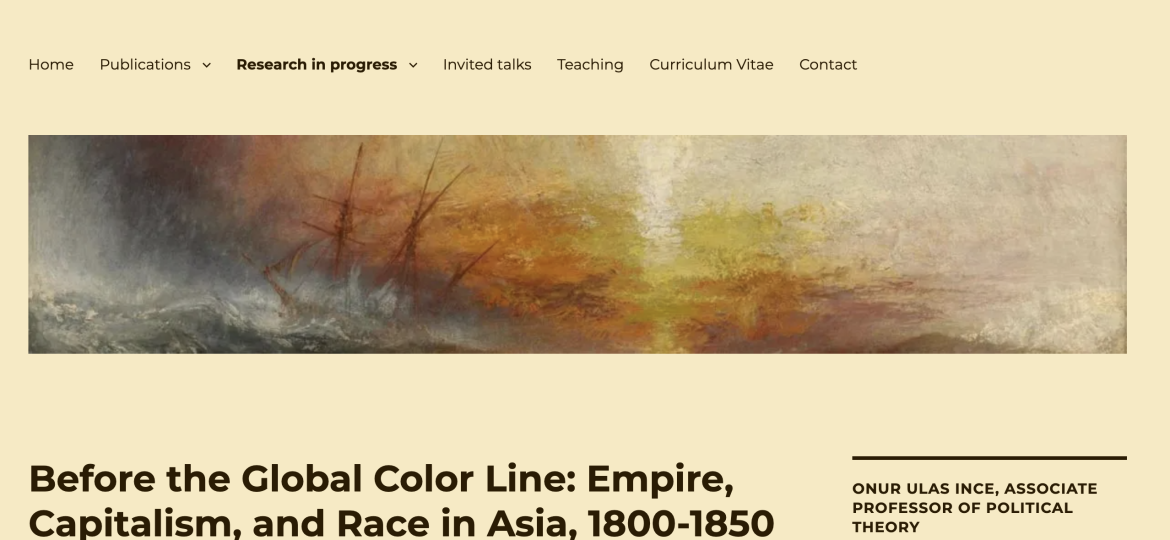7月7日
Monday, July 7, 2025 16:45-18:00
Venue
Seminar Room AA401, Research Building No2, Yoshida Campus, Kyoto University
主催:科研費挑戦的研究「人間の「ちがい」と差別に関する人類学的研究」(24K21178)
共催: 京都大学環インド洋研究センター(KINDOWS)
問い合わせ: kindows[at]asafas.kyoto-u.ac.
タイトル/Title:Before the Color Line: Empire, Capital, and Race in Asia, 1800-1850 (Oxford U Pから出版予定のご著書の内容についてご紹介いただきます)
講師 / Speaker:Onur Ulas Ince氏
進行中の本全体の詳細については、こちらのサイトをご覧ください。
アブストラクト | Abstract
The turn of the twentieth century witnessed the consolidation of the “global color line” whereby a racialized global capitalist economy at once connected and separated imperial metropoles and their colonial peripheries. Before the Color Line excavates the ideological “prehistory” of this global order by investigating the formation of racial categories under British colonial capitalism in South and Southeast Asia. The book contends that the perceived social differences between the British Empire’s Asian subjects, which would eventually sediment into the categories of nineteenth-century scientific racism, were originally elaborated through the stadial theory of civilization and savagery. Crucially, the civilizational gradations themselves drew their semantic content from classical political economy’s capital-centric theses. Political economy and Enlightenment ethnography, as cardinal languages that ordered the social heterogeneity of the empire, thereby furnished the ideational precursors of racial categories that contoured the global color line.
By tracing the circulation of these languages across the British Empire, the book parts with “methodological Atlanticism” in the study of racial capitalism that often confines analysis to New World slavery and settler colonialism. Set against Britain’s transoceanic political economy, the book highlights the dynamics of colonial capitalism in South and Southeast Asia in explicating the racial ordering of colonial populations. It is argued that the racial archetypes of the “Hindoo” and the “Chinaman” took shape in nineteenth-century projects to reform Britain’s Asian empire through the capitalist reorganization of colonial land and labor. While the specific terms and ends of the racial hierarchies in Asian contexts diverged from those of the Atlantic slave-settler formation, they can nonetheless be compared and decoded by a common logic of “capitalist racialization.” Recovering neglected debates over the “British colonization of India” and the “Chinese colonization of Southeast Asia,” the book raises fresh questions and insights for scholars of colonialism and empire. An original synthesis of intellectual history, social theory, and colonial studies, Before the Color Line challenges readers to think capitalism, empire, and race in a comparative and connected global framework.


